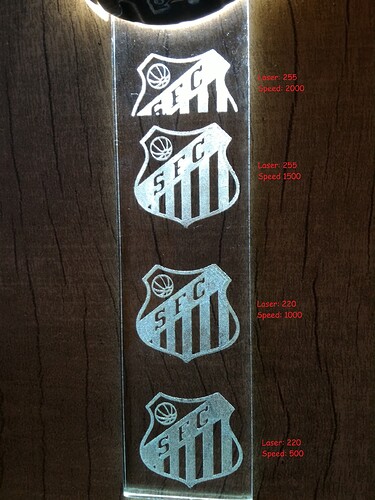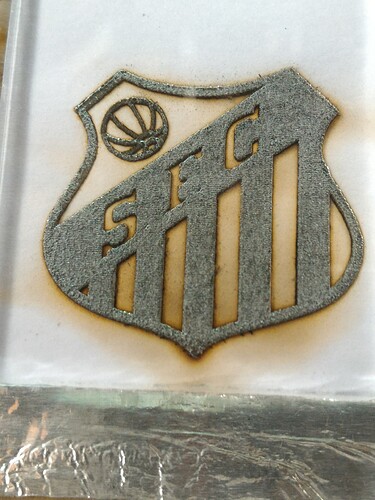I’ve done some glass engraving tests where I put a sheet of white printer paper and the glass is engraved on the back, the beam goes through the glass and burns the paper, leaving the engraving on the glass. In the photo, from the bottom to the top, the roughness decreases, the ones marked with S255 / F2000 and S255 / F1500 are almost smooth, you can barely see a relief by touch, I didn’t get any result like this engraving on the top of the glass with a coating of some ink. Unfortunately I haven’t registered the DPI.

